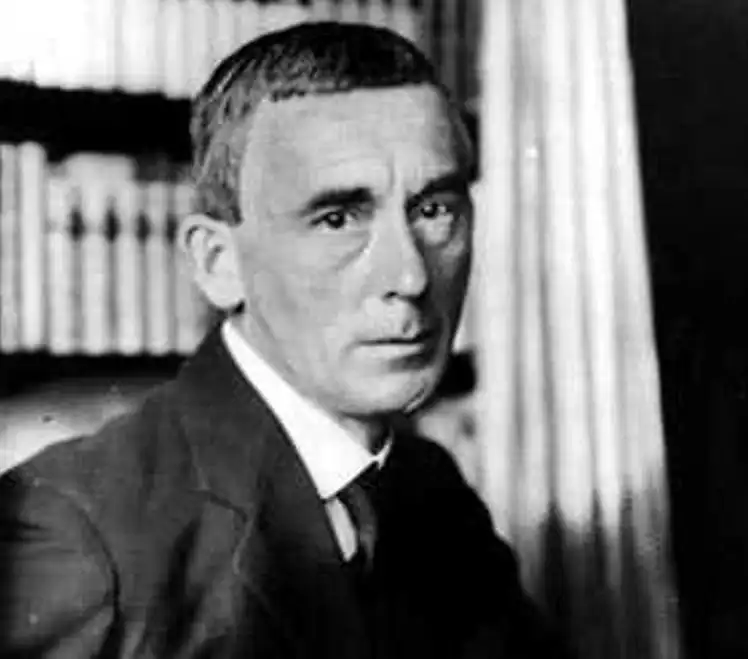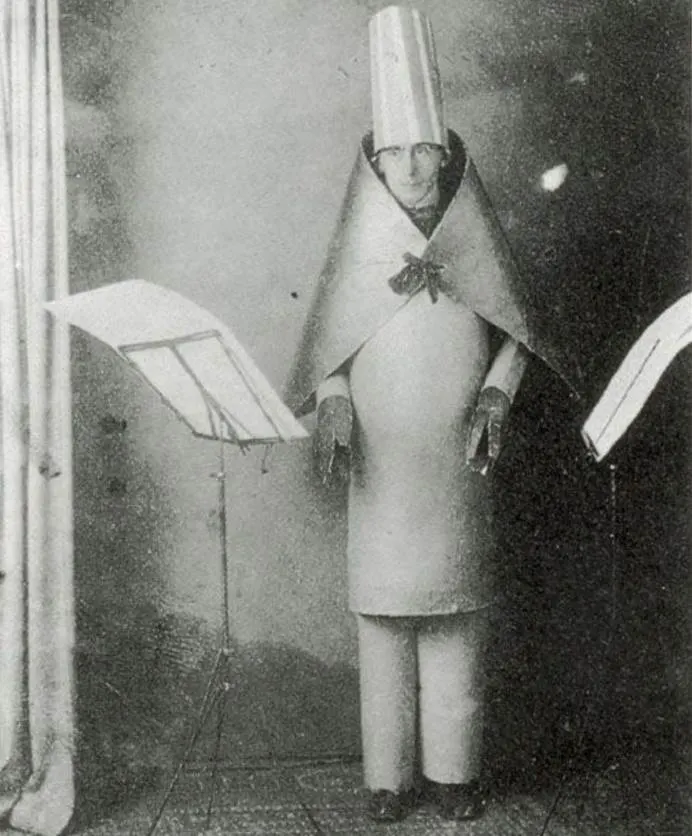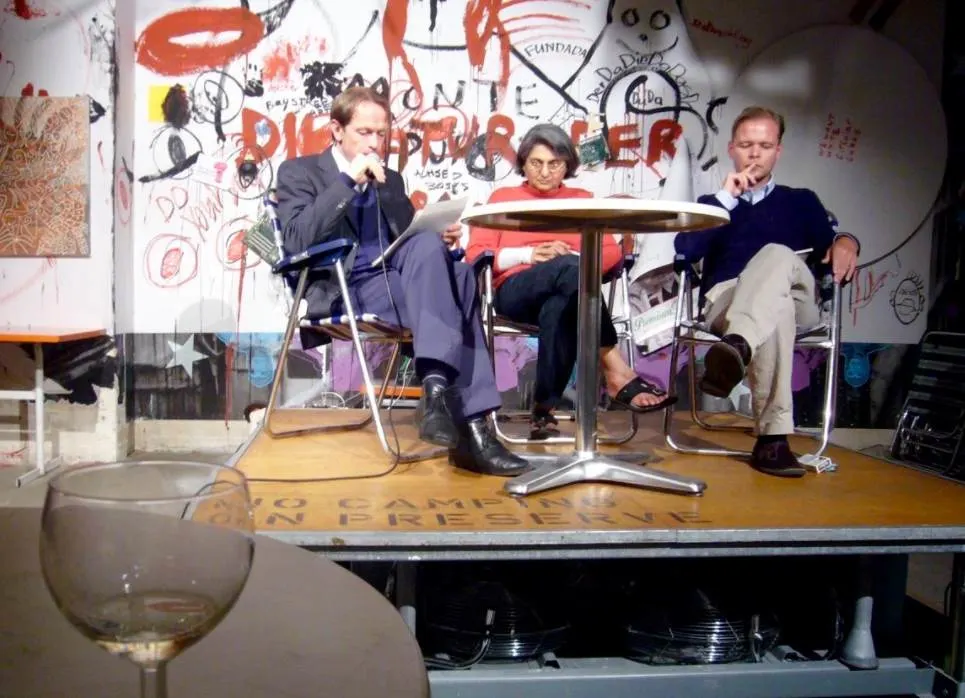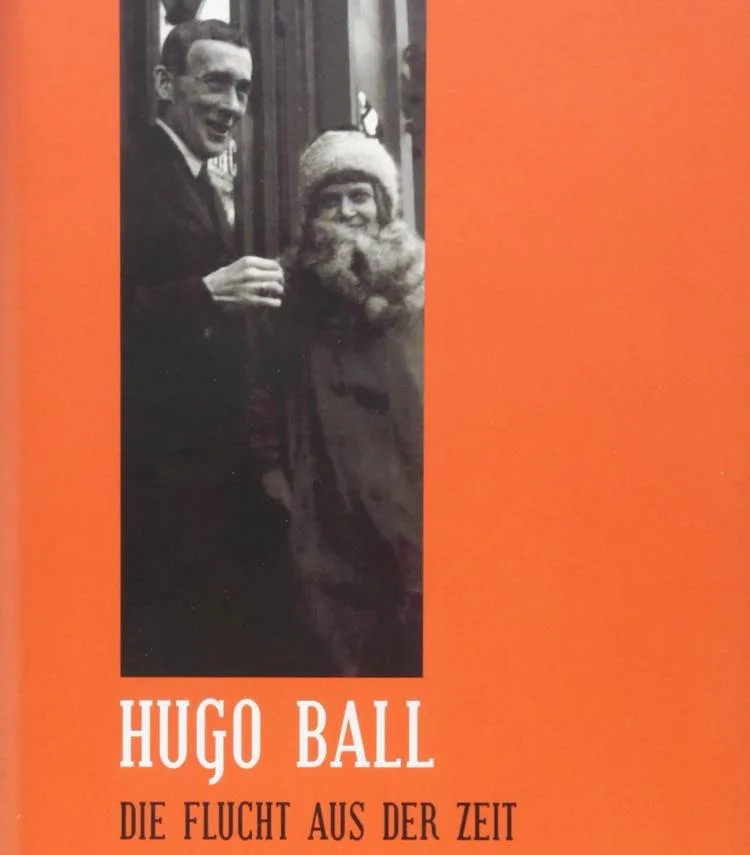World War I was a devastating event in the early 20th century and it had a long-lasting impact all around the world. This includes the world of art because an art movement emerged as a reaction to this black page in human history.
Let’s take a closer look at some of the most interesting facts about Hugo Ball (1886-1927), the man credited as being the founding father of the Dada movement, even though this Dada artist had a relatively low impact on it altogether.
1. He was born in a German town in the southwest of the country
Hugo Ball was born in Pirmasens, a relatively small town in the Rhineland-Palatinate state of southwestern Germany. The town is not too far away from the border with France and has a population of approximately 40,000 inhabitants today.
His family had a middle-class status and he was raised as a Catholic. He developed a keen interest in politics and took courses in sociology and philosophy at the universities of Munich and Heidelberg, although he never finished them.
His big dream was to become an actor so he moved to Berlin in 1910. Here he briefly collaborated with Max Reinhardt (1873-1943), a theater director who is credited with establishing the Salzburg Festival in 1920.

2. He almost joined the German army to fight in World War I
The future founder of the Dada art movement didn’t establish his political ideas at the start of World War I yet because he tried to join the German army as a volunteer at the start of the event.
When he saw the devastation following the invasion of Belgium something struck him deeply. He commented on the matter as follows:
The war is founded on a glaring mistake, men have been confused with machines.
This remark didn’t go over too well in Germany and he was forced to flee the country to avoid being persecuted as a traitor. He eventually managed to cross the border to Switzerland and settled in Zürich, the largest city in the country.

3. His interest in anarchism laid the foundation for the Dada movement
Safe and sound in Switzerland, he continued to study anarchism and became deeply influenced by Mikhail Bakunin (1814-1876). This was a Russian revolutionary anarchist, and one of the most important figures in both the socialist and anarchist movements.
He started translating Bakunin’s books but these works never got published. He eventually ditched anarchism because of its military angle, something that troubled him after what he saw what happened during World War I.
Regardless, it laid the foundation of the ideas that became the Dada art movement.

4. He invented the name Dada and wrote its manifesto in 1916
He is credited as being the founder of the Dada art movement because he wrote the Dada manifesto in 1916. This relatively short work describes his ideas about the state of politics during this time and was heavily influenced by the ongoing war.
The main points of this manifesto that defined the Dada movement were:
- To write poetry out of words instead of with words.
- To create an entirely new language that replaced the doomed and corrupted language of the past.
- To renounce the philosophical ideas of the past which claim to hold the ultimate truth.
Granted, the ambitions of the manifesto were quite bold and that’s why he included that he didn’t intend Dada to become an artistic movement. He eventually left the group of dadïsts after merely 2 years when this happened.
5. His main legacy revolves around non-sensical sound poems
So what was the involvement of Hugo Ball in the Dada art movement? After all, he never really intended for it to become an art movement.
Apart from being credited as being the reluctant founding father of the Dada art movement, he was also a pioneer of an art form known as “sound poetry.” He produced several poems shortly after writing his manifesto, including “Karawane” (1916), a poem completely made up of nonsensical words.
Although you can’t make much of what he says, it’s considered to be a critique of Western society and culture. The poem goes as follows:
jolifanto bambla o falli bambla
großiga m’pfa habla horem
egiga goramen
higo bloiko russula huju
hollaka hollala
anlogo bung
blago bung blago bung
bosso fataka
ü üü ü
schampa wulla wussa olobo
hej tatta gorem
eschige zunbada
wulubu ssubudu uluwu ssubudu
–umf
kusa gauma
ba–umf
The meaninglessness of the poem’s words is what gives the poem its meaning. After all, this was the main principle of the Dada art movement in response to the atrocities that happened during World War I.

More interesting facts about Hugo Ball
6. Hugo Ball didn’t travel to Switzerland alone as he was accompanied by his girlfriend Emmy Hennings (1885-1948). The couple eventually married in the year 1920, shortly after they abandoned the Dada art movement.
This means that they can both be credited with coming up with the name “Dada,” which presumably happened on coincidence after opening the dictionary and using a paper-opener to cut a piece of paper from it.
7. The main meeting place of the Dadïsts was a place co-founded by Ball and Hennings called “Cabaret Voltaire.” This artistic nightclub was established for artists to meet and discuss both artistic subjects and political ones.
Just like the involvement of Hugo Ball in the Dada art movement, the existence of the nightclub was short-lived as it closed its doors in the summer of 1916.

8. One of the main reasons that Hugo Ball left the Dada art movement shortly after establishing it was because of Tristan Tzara (1896-1963), a Romanian-French artist who took Dada a bit more seriously than Ball.
The two didn’t get along very well as he had a nihilistic approach to the movement and Tzara took over the role as the leader of the Dadïsts in Paris in 1919. His move towards symbolism eventually became the prelude to the emergence of Surrealist artists in the 1920s.
9. The building that was home to the founders of the Dada art movement fell in disrepair in the early 21st century and there was a fear that the building would be demolished.
This is when a group of artists who referred to themselves as neo-Dadïsts started occupying the building as squatters. This eventually culminated in the opening of a new cabaret here which still hosts performances today.

10. So what did Hugo Ball do for the rest of his life after abandoning the Dada art movement?
He moved to a small village called Gentilino in the Ticino canton of Switzerland and took on various writing jobs, including for the “Hochland” Journal and “Die Freie Zeitung” in Bern.
He also completely rejected his anarchistic ideas and became a Catholic again in 1920, the year that he married his wife Emmy Hennings. The couple lived in relative poverty for the next years until Hugo Ball passed away of stomach cancer on September 14, 1927.
His final major contribution was a work he published called “Die Flucht aus der Zeit” or “The Flight from TIme.” He put this together based on the diaries he kept between 1910 and 1921 and it gives us a complete insight into how the Dada art movement emerged.

